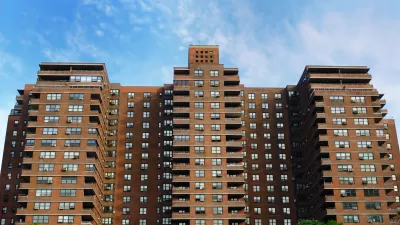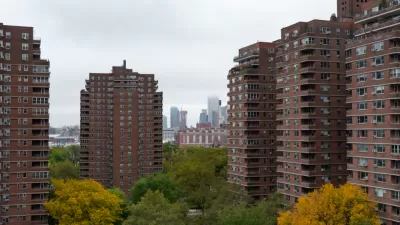Records show that there have been about 300 injuries related to faulty New York public housing elevators since 2001. Ironically, a problem stemming from chronic underfunding has cost the Housing Authority $3.5 million in settlements over six years.
"The Housing Authority, the city's biggest landlord, provides low-rent housing subsidized by the federal government to poor and moderate-income families. It is responsible for one of the biggest and busiest elevator fleets in New York City: 3,338 elevators in 2,618 buildings. Its elevators make 3.1 million trips a day and 1.2 billion trips a year.
Ricardo Elías Morales, the Housing Authority's interim chairman, said the reported accidents and injuries were just a fraction when considering those millions of elevator trips. 'Within that context, if you really look at the usage and then look at the trips and injuries, the likelihood of someone getting hurt is one in 34 million trips,' he said.
The agency's elevators have been criticized by tenants and elected officials after a 5-year-old Brooklyn boy, Jacob Neuman, fell 10 stories to his death while trying to escape a stalled elevator in August. Largely as a result of that accident, and widespread complaints about elevator reliability, the authority pledged last year to spend $107 million to replace about 550 elevators in the next five years."
FULL STORY: Elevator Accidents in Public Housing Are Frequent, and Costly

Planetizen Federal Action Tracker
A weekly monitor of how Trump’s orders and actions are impacting planners and planning in America.

Maui's Vacation Rental Debate Turns Ugly
Verbal attacks, misinformation campaigns and fistfights plague a high-stakes debate to convert thousands of vacation rentals into long-term housing.

Restaurant Patios Were a Pandemic Win — Why Were They so Hard to Keep?
Social distancing requirements and changes in travel patterns prompted cities to pilot new uses for street and sidewalk space. Then it got complicated.

In California Battle of Housing vs. Environment, Housing Just Won
A new state law significantly limits the power of CEQA, an environmental review law that served as a powerful tool for blocking new development.

Boulder Eliminates Parking Minimums Citywide
Officials estimate the cost of building a single underground parking space at up to $100,000.

Orange County, Florida Adopts Largest US “Sprawl Repair” Code
The ‘Orange Code’ seeks to rectify decades of sprawl-inducing, car-oriented development.
Urban Design for Planners 1: Software Tools
This six-course series explores essential urban design concepts using open source software and equips planners with the tools they need to participate fully in the urban design process.
Planning for Universal Design
Learn the tools for implementing Universal Design in planning regulations.
Heyer Gruel & Associates PA
JM Goldson LLC
Custer County Colorado
City of Camden Redevelopment Agency
City of Astoria
Transportation Research & Education Center (TREC) at Portland State University
Jefferson Parish Government
Camden Redevelopment Agency
City of Claremont




























